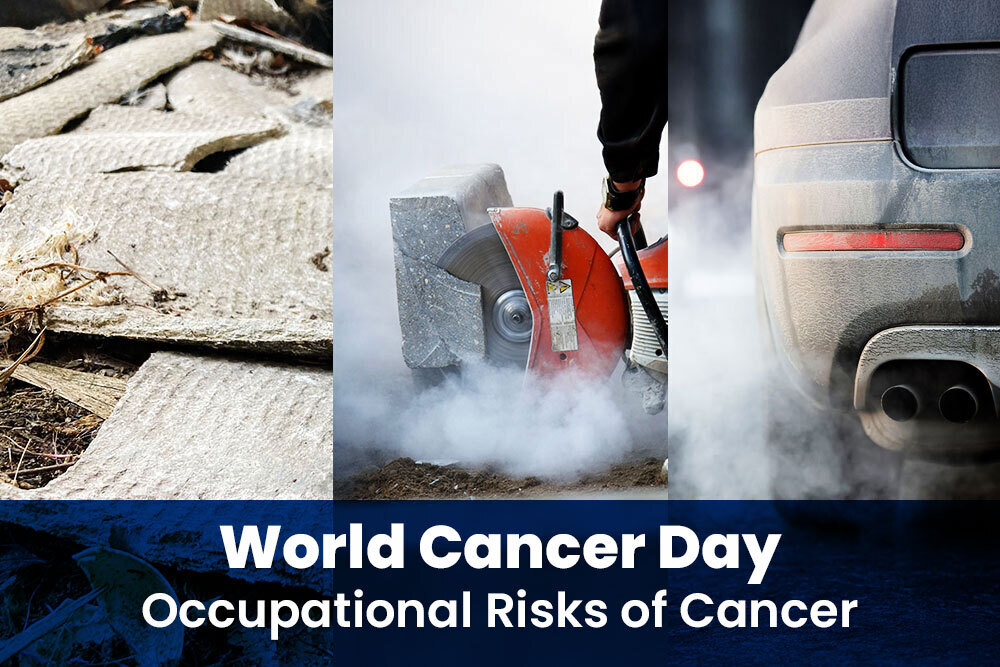
Environmental health and safety (EHS) describes the three pillars of occupational health and safety: protecting the environment, protecting employee health and preventing workplace accidents.
The scope of EHS is broader than some people first assume. It applies whether your organisation operates under strict environmental regulations or not, because health and safety risks exist in every workplace.
In this blog, you will learn what EHS is, how it benefits organisations and the common challenges businesses face when putting an EHS system into practice.
The Definition of Environmental Health and Safety
Environmental health and safety is a management discipline that combines three separate but equally important pillars:
- Environmental protection – reducing the impact of business operations on the natural world, such as cutting emissions, managing waste or conserving resources.
- Health – safeguarding the wellbeing of employees by managing risks like stress, fatigue or repetitive strain.
- Safety – preventing accidents and injuries by controlling workplace hazards and ensuring safe systems of work.
Despite some confusion, these three pillars are distinct from one another. The “environmental” element may be named first, but it doesn’t define health or safety.
Take manual handling as an example. It is one of the leading causes of workplace injury, yet it has nothing to do with environmental protection. But it still belongs within EHS because it protects worker health and prevents safety incidents.
This broader perspective is what makes EHS so vital. It ensures organisations identify and control risks across every aspect of their operations.
Managing Environmental Health and Safety at Work
In the UK, the foundation of workplace health and safety law is the Health and Safety at Work etc. Act 1974 (the HSWA).
The HSWA sets out an employer’s duty of care to protect employees and any others who may be harmed by their work. It is the overarching legislation under which more specific regulations have been introduced.
(Environmental responsibilities are also set in law, most recently through the Environment Act 2021, but health and safety legislation is generally the primary driver of day-to-day EHS management.)
Among the regulations made under the HSWA, the most important is the Management of Health and Safety at Work Regulations 1999. These regulations require employers to carry out risk assessments, which are crucial to compliance.
Risk assessments apply to every type of risk – environmental, health and safety – and underpin every set of safety-related regulations.
Even in low-risk, office-based environments, the duty to conduct risk assessments applies. The process involves:
- Identifying hazards
- Assessing who might be harmed and how
- Evaluating risks and deciding on precautions
- Recording findings where required
- Reviewing and updating assessments as needed
Completing risk assessments is the minimum standard for compliance. From this foundation, you can build stronger EHS programmes that both meet legal duties and improve workplace wellbeing and performance.
Health and Safety Courses
Our health and safety courses support legal compliance and effective risk management. They raise awareness of common workplace hazards and teach the fundamentals of safe working.
Advantages of Implementing Environmental Health and Safety Practices
Legal Compliance
At the most basic level, implementing EHS is about compliance.
Legislation such as the Health and Safety at Work etc. Act 1974 sets out clear legal duties, and failing to meet them can result in prosecution, financial penalties and reputational damage.
Business Continuity
Beyond compliance, EHS brings measurable business benefits. Strong safety systems reduce the likelihood of accidents and ill health, meaning fewer absences, less downtime and greater continuity in day-to-day operations.
Every incident you prevent means more time spent working productively, rather than managing disruptions, injuries or lengthy investigations.
Stakeholder Engagement
EHS also strengthens your position with stakeholders.
Clients want to work with organisations that have a strong track record in health and safety, as this reduces risks to their own operations.
And customers increasingly expect businesses to show they are managing their environmental impacts as well as protecting their people. For organisations operating in consumer markets, visible commitment to sustainability is a strong selling point.

Challenges of Implementing Environmental Health and Safety Practices
Senior Leadership Buy-In
The success of any EHS programme begins at the top. Without visible support from senior leaders, initiatives will lack authority and direction.
Leaders must set the tone and show that health, safety and environmental management are core to the organisation’s success.
Resource Allocation
When senior buy-in is weak, resources are often the first casualty.
Effective EHS requires investment in time, staff and technology. Under-resourced initiatives struggle to deliver improvements, which in turn undermines confidence in the system and prevents further investments.
Employee Engagement
If employees see EHS initiatives as underfunded or unsupported, they’re unlikely to take them seriously. Engagement suffers, with workers minimising or avoiding involvement.
Building a world-class safety culture depends on clear communication, contributions from frontline workers and and a visible commitment from all levels of management that EHS is a real priority.
Awareness and Understanding
A reluctance to promote or engage with safety initiatives may also be rooted in misunderstanding.
Regulations are deliberately written in broad terms so they can apply to every possible work environment. This means employers are expected to interpret and act on them with a degree of independence.
For organisations with limited resources, bringing in external specialists or consultants can be too costly. Fortunately, compliance for smaller organisations is often more manageable, and you may be able to develop the necessary understanding through online training.
Key Regulations and Guidelines in Environmental Health and Safety
As mentioned earlier, the Health and Safety at Work etc. Act 1974 sets out the overarching duty of care for employers. Other specific regulations you may have to comply with sit under it.
Health and Safety Regulations
Sitting under the HSWA are a wide range of more specific regulations. Not all of these apply to every workplace.
It’s the responsibility of the employer to assess risks in their workplace and ensure compliance with the specific regulations that apply. Some regulations, however, are almost universal across industries. These include:
- The Health and Safety (Display Screen Equipment) Regulations 1992 (DSE) – covering safe workstation setup for people who use computers or other screens
- The Workplace (Health, Safety and Welfare) Regulations 1992 – setting minimum standards for the working environment
- The Health and Safety (First Aid) Regulations 1981 – requiring adequate and appropriate first aid provision
- The Provision and Use of Work Equipment Regulations 1998 (PUWER) – ensuring all work equipment is suitable, maintained and used safely
These regulations are enforced by the Health and Safety Executive (HSE), which conducts inspections, provides guidance, and has the authority to issue penalties or prosecute where duties aren’t met.
Environmental Regulations
Just as the HSWA provides the framework for workplace safety, acts of parliament set the foundation for environmental protection. The most significant of these is the Environment Act 2021, which establishes standards for air quality, water quality, waste reduction and resource efficiency.
Supporting regulations and guidance include:
- The Environmental Protection Act 1990 – governing waste management and pollution control
- The Control of Pollution (Oil Storage) Regulations 2001 – covering safe storage of oil to prevent environmental damage
- The Waste Regulations 2011 – setting out duties for the handling, transport and disposal of waste
These acts and regulations are enforced by the Environment Agency in England and its counterparts in Scotland, Wales and Northern Ireland. These agencies carry out inspections, issue permits and impose sanctions where environmental standards are breached.

Training is Vital to Protect the Environment and People
Understanding your duties is the first step to building a safe, healthy and sustainable workplace. Employers and employees alike need clarity on what regulations require, how risks should be managed and what best practice looks like in day-to-day operations.
Human Focus offers a wide range of online training courses covering almost every aspect of EHS. These courses are designed to give duty holders and workers the essential knowledge needed to improve safety standards, reduce risks and manage environmental responsibilities more effectively.
Explore our full range of health and safety and environmental protection courses now and gain the knowledge to protect your people, meet your duties and build a more sustainable workplace.





















